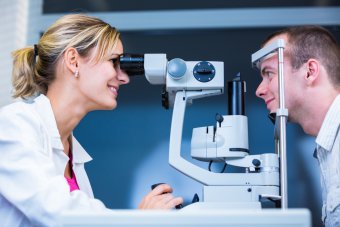 Medicine & Health
Medicine & Health
Treatment of vision defects. Part I
One of the methods of treatment of vision defects is its correction by wearing spectacle lenses or contact lenses. The use of this type of methods is essential for each defect found by a specialist, because the defect not treated may gradually deepen more and more strongly.
Eyesight defects corrected by means of spectacle lenses are always initially diagnosed by a doctor to determine the size of the defect, which will allow you to select the best glasses. If hyperopia is diagnosed in children or adolescents between +1 and +2.5, a permanent correction is usually not required due to the high accommodation of the eye at this age. If the detected defect exceeds +2.5, the doctor very often decides about the necessity of wearing glasses and prescribes appropriate glasses for near vision.
Slightly different is the case with short-sightedness and here the correction of vision is determined individually after the diagnosis of anatomical features of the eye. In this case, the choice of lenses depends on the patient's visual abnormalities and visual acuity. Doctors assume that a child or teenager should see at least 80% of the optotypes during the examination. If the patient has a weaker visual acuity, this results in excessive blinking of the eyes, which inevitably leads to a worsening of the defect if not corrected properly. Children with a short-sightedness problem usually have the recommended glasses with positive glasses for homework, computer work or reading, which forces natural eye training and thus reduces the worsening of the short-sightedness problem.
 Adults who have not had a previously diagnosed vision defect, very often after the age of 40 begin to notice disturbing changes in vision and sharpness of the image. If, on the other hand, hyperopia was previously detected, doctors often recommend glasses for distant and near vision in this case. In short-sightedness, patients wear glasses for faraway vision, but as a result of age, there may be a turn in the direction of diminishing the defect (with age, problems with seeing from close up naturally begin), which means that the power of the minus glasses may decrease. Another case of visual impairment is astigmatism.
Adults who have not had a previously diagnosed vision defect, very often after the age of 40 begin to notice disturbing changes in vision and sharpness of the image. If, on the other hand, hyperopia was previously detected, doctors often recommend glasses for distant and near vision in this case. In short-sightedness, patients wear glasses for faraway vision, but as a result of age, there may be a turn in the direction of diminishing the defect (with age, problems with seeing from close up naturally begin), which means that the power of the minus glasses may decrease. Another case of visual impairment is astigmatism.
This defect should be absolutely corrected from childhood, even if it manifests itself to a small extent, which prevents its development in the future. An adult receives gradual correction from a glass doctor's recommendation, which only to a certain extent eliminates abnormal vision so that the patient can get used to it. In the case of different-sightedness, i.e. one eye sees differently than the other, it should also be corrected with appropriate glasses, but the difference between the glasses should not be greater than 3 dioptres.






